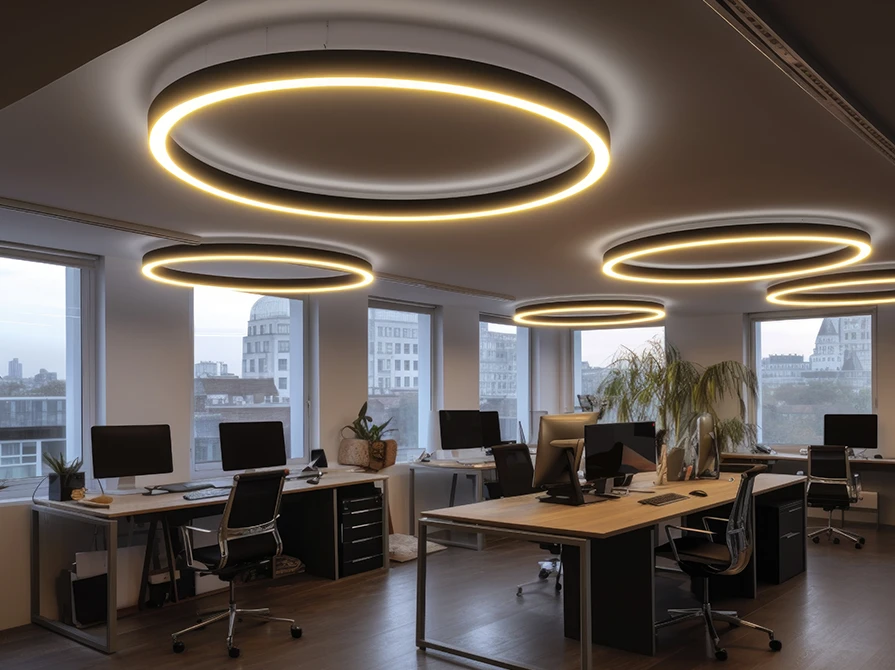


As the world transitions toward more sustainable practices, the role of technology in helping businesses achieve environmental, social, and governance (ESG) goals is more critical than ever. Wipro iSense, an intelligent wireless IoT lighting system, is at the forefront of this movement, providing enterprises with cutting-edge lighting solutions that not only enhance operational efficiency but also significantly contribute to green building initiatives.
Wipro iSense offers a comprehensive suite of features, including energy management, Building Management System (BMS) integration, automated demand response, and environmental sensors, all designed to minimize energy consumption and reduce carbon footprints. This blog will explore how Wipro iSense supports businesses in aligning with green building standards and achieving their ESG objectives.
One of the central elements of any green initiative is energy efficiency. The goal is to reduce the overall consumption of energy, which in turn lowers greenhouse gas emissions and decreases operational costs. Wipro iSense excels in this area by offering advanced energy management features that help businesses track, monitor, and optimize their energy use.
Real-time Energy Monitoring:
iSense allows businesses to monitor their energy consumption in real time. By analyzing energy usage data, enterprises can make informed decisions about how to minimize energy waste and optimize lighting according to the time of day or occupancy levels.
Daylight Harvesting and Occupancy Sensing:
Through automated features like daylight harvesting, iSense systems adjust artificial lighting based on the availability of natural light, ensuring that energy is not wasted when daylight is abundant. Occupancy sensors, on the other hand, reduce energy consumption by ensuring that lights are only used when spaces are occupied, helping to prevent unnecessary usage in unoccupied areas.
By promoting energy efficiency, Wipro iSense plays a vital role in helping businesses reduce their overall energy consumption and move closer to sustainability goals.
A key feature that makes Wipro iSense particularly valuable in sustainable building initiatives is its ability to integrate seamlessly with existing Building Management Systems (BMS). This integration creates a cohesive ecosystem that allows enterprises to manage all aspects of their building’s infrastructure—including HVAC, lighting, and security—through a single platform.
Holistic Control:
By integrating lighting with other systems like HVAC, businesses can create synchronized schedules that further enhance energy savings. For instance, if a particular area is unoccupied, both the lighting and HVAC systems can be automatically adjusted or turned off, reducing energy usage across multiple systems.
Data-Driven Optimization:
BMS integration also facilitates comprehensive data collection and analysis across various systems. This provides businesses with a clearer picture of where inefficiencies may lie and enables them to fine-tune their building’s operations for maximum efficiency.
This level of integration ensures that energy-saving opportunities are maximized, helping businesses achieve more sustainable operations and ultimately contributing to long-term environmental goals.
Automated demand response is another crucial feature of the Wipro iSense system that plays a vital role in sustainability efforts. Demand response refers to the ability of a system to reduce or shift energy consumption during periods of peak demand, which helps to alleviate strain on the electrical grid and reduces the risk of blackouts or other energy-related issues.
Intelligent Load Management:
With iSense, businesses can implement automated demand response strategies that intelligently reduce lighting loads during peak periods. This can be achieved without compromising workplace safety or comfort by selectively dimming lights in less critical areas while maintaining full lighting in essential spaces like production floors or warehouses.
Lowering Energy Costs:
By participating in demand response programs, businesses can take advantage of financial incentives offered by utility companies for reducing energy usage during peak times. This not only helps reduce operational costs but also contributes to a more stable and efficient energy grid.
Wipro iSense’s demand response capabilities ensure that businesses can contribute to broader energy conservation efforts while maintaining operational efficiency.
In addition to energy management, sustainability also involves ensuring a healthy and comfortable environment for building occupants. Wipro iSense incorporates environmental sensors that monitor air quality, temperature, and humidity, helping to maintain optimal conditions in the workplace.
Air Quality Monitoring:
Poor indoor air quality can have negative impacts on both employee well-being and productivity. By monitoring CO2 levels and other pollutants, iSense allows building managers to take timely action to improve ventilation and air circulation. This contributes to a healthier workplace, which is an important aspect of ESG initiatives focusing on social responsibility.
Temperature and Humidity Control:
Maintaining optimal temperature and humidity levels is crucial for both comfort and energy efficiency. With iSense, businesses can track these metrics in real time and adjust HVAC systems accordingly, reducing energy consumption while maintaining a comfortable indoor environment.
By integrating these environmental sensors, Wipro iSense not only contributes to sustainability efforts but also ensures that the workplace is conducive to employee health and productivity.
The ultimate goal of any green initiative is to reduce carbon emissions, and Wipro iSense is designed with this objective in mind. By optimizing energy usage, automating lighting controls, and integrating with BMS systems, iSense helps businesses significantly lower their carbon footprint.
Energy Savings:
Efficient lighting systems consume less electricity, which directly contributes to reducing the carbon emissions associated with energy production. By automating lighting and integrating with other building systems, iSense enables businesses to achieve significant energy savings.
Long-Term Sustainability:
Through continuous monitoring and optimization, iSense ensures that businesses can maintain low energy consumption over the long term, contributing to a sustainable future. By adopting such technologies, companies not only reduce their environmental impact but also enhance their reputation as responsible corporate citizens.
Wipro iSense is much more than just a lighting solution—it’s a comprehensive system that supports businesses in achieving their sustainability and ESG goals. Through energy management, BMS integration, automated demand response, environmental sensors, and support for green building certifications, iSense enables enterprises to reduce their carbon footprint and operate more efficiently. Contact us to know more about how adopting intelligent solutions like iSense is not just a step toward a greener future but also a smart investment in long-term business success.







